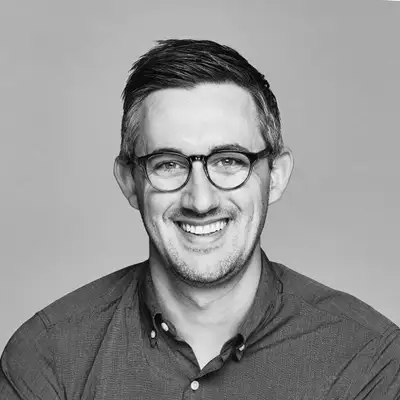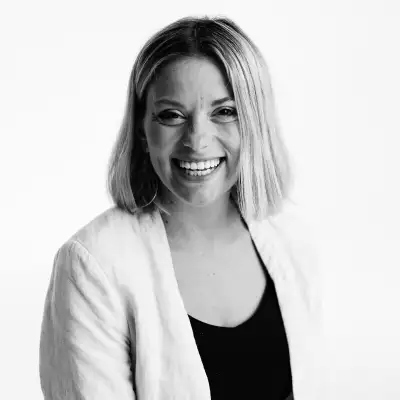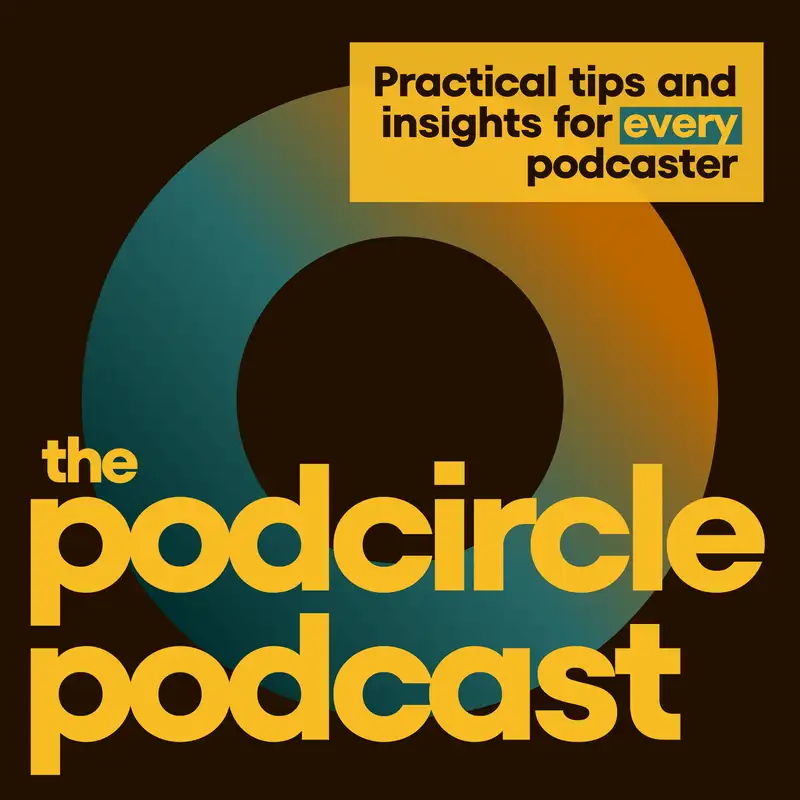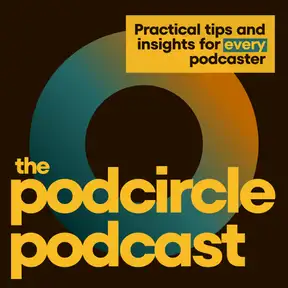40. Unlocking YouTube for Podcasters: Setting Up and Optimizing Your Channel
Welcome to the Podcircle Podcast, where we provide practical tips and insights for every podcaster.
Mickenzie Vought:Whether you're just getting started or you're already a seasoned podcast pro, these conversations dive into all the topics that matter most to you. Alright, friends. Last week, we dove into how the end of Google Podcasts is making way for podcasters to tap into the power of YouTube, And we really believe that they can take their podcast to the next level by optimizing YouTube, and that's why we are here this week. This week, we're going to help you set up your YouTube channel and optimize and customize your settings to produce the best results for you and your business. So make sure you're subscribed to our channel on YouTube where we post all of our episodes and follow along with this episode and catch up on past ones.
Kyle Cummings:And don't forget that if you're listening on Apple or Spotify to rate and review the show, it really helps us out.
Mickenzie Vought:Yes. So last week, we shared that Google Podcasts has gone the way of Google Music, and it was officially sunset April 2nd. They are migrating all their users over to YouTube Music Podcast. So that's a little confusing. YouTube Music Podcast.
Mickenzie Vought:But because Google owns YouTube, they are just trying to get all of their users where they already naturally are. This stat was really telling for me. According to Edison, about 23% of weekly podcast users in the US say YouTube is their most frequently used service versus just 4% for Google Podcasts. So they're hoping to move that 4% over to YouTube and be able to really meet their people and spend money and invest where their users already are. So, Kyle, you are the expert here.
Mickenzie Vought:We're gonna be leaning on your wisdom over the next couple of episodes. If someone's looking to start a YouTube channel and really wanna optimize their channel for the best results, the best discoverability, what are the things they need to do to stand out and get more views?
Kyle Cummings:Yeah. I mean, the very first thing that you'll do is just to create your channel. So as most of you probably know, YouTube is owned by Google. So when you go to create a YouTube account, you'll use your either your Gmail account or if you have a Google account set up, you can use that same username and password to set up your YouTube channel. However, I would recommend and especially if you have a business that you set up a separate Google account for your business for your channel instead of using your personal account.
Kyle Cummings:That's definitely what I would recommend just to kinda keep things clean. And then the the next step is under your account settings, really simple. You just click, you select create a channel and then you'll name your channel. You can name it your business's name or you can just if you wanna set up a channel that's specific to your podcast, you'll just name it your podcast name Mhmm. And then choose your handle.
Kyle Cummings:Our handle is @podcircle because that's the name of our business and and is also the name of our podcast, so we just keep it really simple. The next thing you're gonna wanna do is upload all of your branding assets. So that's gonna include if your channel is your podcast or if your podcast is your channel, I should say it that way, then you would upload your podcast artwork kind of as your profile picture kind of thing. Also, your channel has a banner image. They're really similar to LinkedIn, Facebook, that long, like, horizontal banner that appears at the top.
Kyle Cummings:Upload that there as well. If you need help, you know, creating something like that, Canva. We always say this at Canva is your friend. Go in there. Yes.
Kyle Cummings:They've got, you know, different types of templates that you can go in and edit and tweak to your liking. It's a great resource. Mhmm. And then the other thing is just adding a channel description. It's just the text.
Kyle Cummings:What is your channel about? Maybe it's your podcast description. So if you're hosting your podcast elsewhere on transistor or buzzsprout or one of those hosting services, that's just a simple copy and paste over here to let people know what your channel is all about. And then you can start uploading your videos to your channel. There are a few really important steps to this process and now we're actually gonna hit those in next week's episode of the podcast.
Kyle Cummings:So make sure to subscribe and follow along for that because there's some really key steps to making sure that people actually see your episodes and that they're compelling and that people click and follow along and then finally I would say on that upload that video upload page you're gonna wanna create a playlist for your podcast. So YouTube has playlist that you where you can, like, group similar videos together if especially if they're topical. They have a specific designation for podcast and they call it a podcast playlist and that one they treat a little bit differently. And so I would be sure to create that right away. And every time you upload a new episode of the podcast, to go ahead in the podcast, section or the playlist section, excuse me, to select that podcast playlist so that all your episodes appear in that feed, you know, from week to week and that people can go back and they can review your all your episodes together because you might be posting different videos to your channel that aren't a part of your podcast.
Kyle Cummings:And so you wanna make sure you kinda organize your channel in a way that's easy for people to navigate it.
Mickenzie Vought:Awesome. And I think the thing that I think about when you say all this is just the importance of consistency and making sure like you said, if you've got your podcast description somewhere else, wherever you're hosting it, just to have consistency so you create the same experience on all the different platforms for someone who's coming to your YouTube channel, familiar with your podcast from listening on Spotify. Just consistency from a branding standpoint. And that comes in your imagery. It comes in your words.
Mickenzie Vought:And it even comes in what you're putting out the product that you're putting out, making sure that you have very similar if you're doing a full video podcast that is very similar to the audio. So we can get into that another time. But once your channel is set up, I know that there are a few things that really help you step it up, that you can customize your channel in some ways that maybe people wouldn't think of. So can you talk us about some of the ways that we can customize the channel?
Kyle Cummings:Yeah. Absolutely. So one of the ways is something I already mentioned, and that's that's your banner image. So when someone goes to your main channel, that's A big thing is to pay attention to the size guidelines because they're they're kind of interesting because Mhmm. You know, you've got the YouTube app on your phone, and then you've got YouTube in your web browser, but YouTube also has apps on basically every smart TV that and so the sizing guidelines of sizing template to make sure you're you're within the safe zones.
Kyle Cummings:So that that image is displayed well on all the kind of different platforms. So you know, don't I wouldn't overthink it. Don't over complicate it. But one of the things that that I like to do and that we do for Podcircle is we use that banner image to promote one of our lead generators. So our podcast starter kit that you guys hear about all the time, if you listen to the podcast, we have that on our banner image all the way to the right.
Kyle Cummings:And then there's the URL podcircle.com/start where people can go get that. So it's just right away telling people where they can go get a free resource that's gonna help them out with their podcast. And so if you're a business owner and you're using your YouTube channel to promote your products or services or you have lead gens, things like that, I think that's a perfect place to promote that. And then finally, the last tip I'll I'll say here on this part of things is to use the video watermark. So the video watermark is that little kind of like an icon image that appears in the lower right hand, portion of each YouTube video basically.
Kyle Cummings:And there's different things that you can do with that. But one thing I see a lot of YouTubers do something that we do as well is to just have a button down there that just says subscribe because it's always there. It's cons it's constantly there, and it's always reminding people to subscribe to the channel because that's what it's all about. You wanna build up your base of subscribers, so that you can get in front of these people on a on a regular basis with the content that is relevant to them. So I think that's a nice little little pro tip Yeah.
Kyle Cummings:For YouTubers. So there's one other thing I wanna mention here before we close out that's super important. It's that YouTube, in order to unlock some really key, what they call advanced features, you you wanna go through an additional level of verification with them, which Okay. Simply involves uploading your driver's license. And so you might be Proving
Mickenzie Vought:you're a human.
Kyle Cummings:Yeah. Proving you're a human and that you're the human the right human that's attached to that account.
Mickenzie Vought:Got it.
Kyle Cummings:It's pretty simple, but what it does the biggest thing that I think that it does is it allows you to post links in the description. So if you ever watch a YouTube video and they're talking about something or promoting something like, you know, find the link in the description and they always point down to the description. Well, if your links don't work in the description, that's not great because most people aren't gonna try to do the whole copy paste thing. So
Mickenzie Vought:Yes. No.
Kyle Cummings:Going through this advanced verification unlocks that as a feature as well as a a few other things that are pretty important to you kind of as you get into your growth as a as a YouTuber, and you kinda start to see how it works, and you get into kind of the more features that are gonna help you grow your channel and maintain your channel. If you ever have any copyright issues, things like that, having this level of verification is gonna help you overcome those a lot easier. So my advice is just to start out strong, go ahead and go through that verification. It's really simple, and then you have a a really strong channel right out of the gate.
Mickenzie Vought:Will you be prompted to set up this verification when you're setting up your YouTube channel? Or do you have to go in somewhere within the settings to do that?
Kyle Cummings:That's a good question, and I don't I actually don't remember, but I can Okay. I can tell you exactly where to go. So to do this, you sign in to your YouTube studio, which is basically where you do everything in your account, which is where you upload videos, customize your channel. So you're already gonna be there anyways if you're doing some of these other things. And then you just go to settings.
Kyle Cummings:And once you're on that settings page, you click channel, and then you're gonna select feature eligibility. And this is actually where you're going to go through that verification. This is where you're gonna upload, your driver's license. Gotcha. YouTube can verify the authenticity of your channel, and it usually takes I actually I'm actually just going through this with a client right now.
Kyle Cummings:It was less than 24 hours for, for them to verify it.
Mickenzie Vought:That's awesome. I feel like this episode is full of practical steps. And I think a lot of us want to be on YouTube and know that, but it feels a little nebulous and a little scary. And it's it's another platform you have to master. Right?
Kyle Cummings:Yeah.
Mickenzie Vought:So I'm excited for y'all. Alright, podcasters. Your homework is to set up your channel before next week because when we come back next week, we're gonna walk you through uploading your first video and then the steps to make sure that every video you upload is optimized to increase reach and engagement. So we are so excited for this podcast series. And if you're ready to take your existing podcast to the next level or maybe finally launch a new podcast, Podcircle can help.
Mickenzie Vought:If you are digging into the YouTube side of things and wanting a little bit of help or saying I wanna do YouTube, but I don't even wanna touch it, We are your people. You can schedule a free consultation with Kyle at kyle@podcircle.com, and he'll hop on a call with you and walk through and learn more about your podcast or what you're wanting to do and offer you the best suite of services that we have for you. Alright. Well, we'll see you next week.
Creators and Guests




